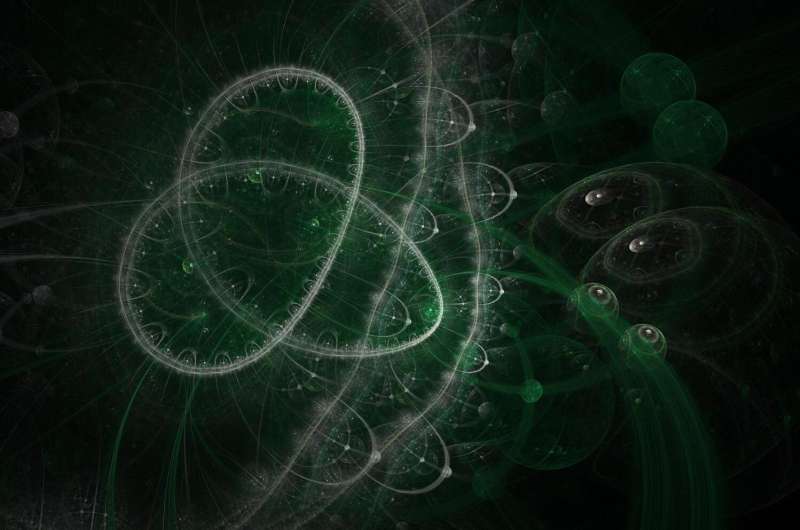March 9, 2018 report
Topological superconductor phase may solve decoherence problem in quantum computers

A team of researchers from Japan, the U.S. and China, has identified a topological superconducting phase for possible use in an iron-based material in quantum computers. In their paper published in the journal Science, the team outlines their study of the phase, which, they claim, shows promise as a means for solving the decoherence problem in quantum computers.
As research surrounding quantum computers continues researchers confront a number of problems. One is the tendency of quantum states to degrade, resulting in computing errors—a problem known as decoherence. Experts suggest that the solution to the problem is to develop a material capable of protecting the quantum state by employing just the right topological properties. In this way, localized noise would not be able to disturb the quantum state. In this new effort, the researchers report on the identification of a topological superconducting phase that they believe could satisfy this requirement.
The researchers report that they were able to attain three key kinds of measurements believed to be necessary for analyzing the quantum phase of Fe(Te, Se) in sufficient detail, which they claim shows that the phase could prove suitable for protecting the quantum state in a system. They further report that the phase, once integrated into a suitable material, would be capable of supporting Majorana bound states (MBSs), which are quasiparticles so-named due to their discovery by Ettore Majorana. Prior research has suggested that a material capable of using Majorana properties might play a role in solving the decoherence problem.
The researchers note also that they were able to identify the helical spin polarization of the surface state and to measure the superconducting gap. They were also able to identify the surface state. Taken together, the results of their testing indicate that MBSs could be induced in a material by exerting a magnetic field to the Fe(Te, Se). If their predictions pan out, the new phase could wind up as part of the next generation of quantum computers, possibly paving the way for machines capable of manipulating more qubits than those currently in use.
More information: Peng Zhang et al. Observation of topological superconductivity on the surface of an iron-based superconductor, Science (2018). DOI: 10.1126/science.aan4596 , science.sciencemag.org/content … 3/07/science.aan4596
Abstract
Topological superconductors are predicted to host exotic Majorana states that obey non-Abelian statistics and can be used to implement a topological quantum computer. Most of the proposed topological superconductors are realized in difficult-to-fabricate heterostructures at very low temperatures. Here by using high-resolution spin-resolved and angle-resolved photoelectron spectroscopy, we find that the iron-based superconductor FeTe1-xSex (x = 0.45, superconducting transition temperature Tc = 14.5 K) hosts Dirac-cone type spin-helical surface states at Fermi level; the surface states exhibit an s-wave superconducting gap below Tc. Our study shows that the surface states of FeTe0.55Se0.45 are 2D topologically superconducting, providing a simple and possibly high temperature platform for realizing Majorana states.
Journal information: Science
© 2018 Phys.org





















